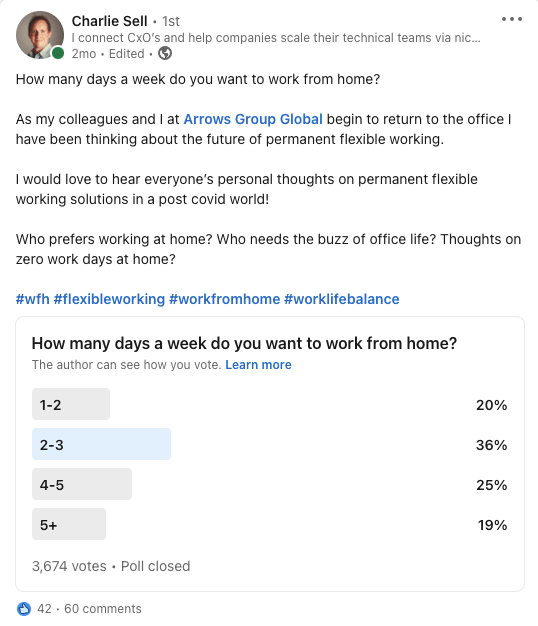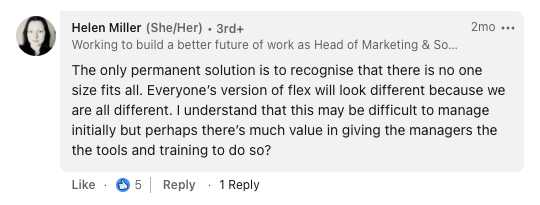We’re in a purple patch of opportunity for candidates right now – especially in the tech sector.
Recent research suggests tech jobs make up 13% of all UK job vacancies, with the number of advertised roles 42% higher than 2019 levels – i.e. before the disruption of COVID-19. *
This is fantastic news for anyone starting out in or seeking a new role in the sector. For hiring businesses, though, competition for the best candidates is fierce. In my view, companies need to look hard at their interview processes and ask if they are fit for purpose in this market.
Where I See Interview Processes Going Wrong
- Excessively Robust
In this market, it’s important to shed the opinion that yours is the only company people want to work for. Never mind the top 10%, the top 40% of candidates have multiple options.

Getting the best of the best does not mean you need the hardest tests at interview, or the most interview stages. Waiting six months for the ideal candidate is not a realistic choice. Lots of people are affected by a failure to hire. It will pile extra pressure on existing teams, create lost opportunity costs and make it harder to keep up with the competition.
We write progress reports for our clients, showing job rejection trends among other things. The proportion turning down an offer between first and final interview stages has crept up from 20% to more like 60% among companies not embracing a more controlled interview process.
There must be a balance.
For many of our successful placements, we’ve been able to get clients to commit to a two-stage interview process within a two-week period. That means they get the choice of the candidate pool.
For candidates involved in this process, we’ve been able to keep them committed to the process and not accept any other roles.
“Crazy to think we used to have 4 stage interview process, by streamlining to 2 stages and paired programming tech test we have gone from hiring 3 engineers a month to 10” – Delivery Manager – Global Media.
- Lacking Creativity
Putting in place a faster interview process should not mean looking for shortcuts. Of course, you can’t just ring someone up and say I’ve found your CV, I want to offer you a job! They’ll say no. People want to feel like they’ve earned their offer and job and it’s been a well thought out process.
But you don’t have to have a four-stage process with a two-hour technical test that runs across weeks. There are creative alternatives that can offer much more interesting insights.
For example, do you want to find out if someone’s technically good and are not sure how to do that without putting them through a 3-hour technical test? Paired programing is a great option, where someone internally in the team sits with the candidate for an hour to talk through some code together. You can get a lot more from that, seeing at the same time how they work together with others.
It’s also not necessary for candidates to meet every stakeholder – be confident in the judgment of the few!
Robust references, taken post offer, are also a huge help. Once that person starts, you’ll know within a few months whether the references and skillset are honest and the drop-out of new hires will be minimal.
- Mediocre Candidate Experience
Candidates tend to look at two things when deciding whether to accept a job offer: the ease of interview process and the candidate experience. Salary and package tend to come after these.

The candidate experience must be really engaging, with a committed time frame and feedback loops. If the candidate experience is not great, if they’ve gone through lots of hoops, if it’s not been consistent, if it’s been time consuming, they will make preferences for other companies.
I do see a growing awareness that the interview process can cost good people. I’d say the companies who are winning have really linked this together and said, “we must improve our candidate experience”.
I underpin all of this with the massive difference between an effective process and rushing or dropping quality. It’s detrimental if you’re just trying to pop offers off left, right and centre. But the halfway house is a robust process captured within two stages that is consistent and fluid.
“Having started 10 different interview processes, I had to reduce down to the top 3. The companies offering a robust and defined interview process played a major part in my decision of who to continue with. To my surprise the best interview process was with a global Tech Business, and I start in a month!” – Senior Front-End Engineer.
If you want to talk more, I have plenty of case studies with specifics on how it’s done well in the market and am always happy and open to discuss.
 Charlie Sell – Group MD, Arrows Group
Charlie Sell – Group MD, Arrows Group 
